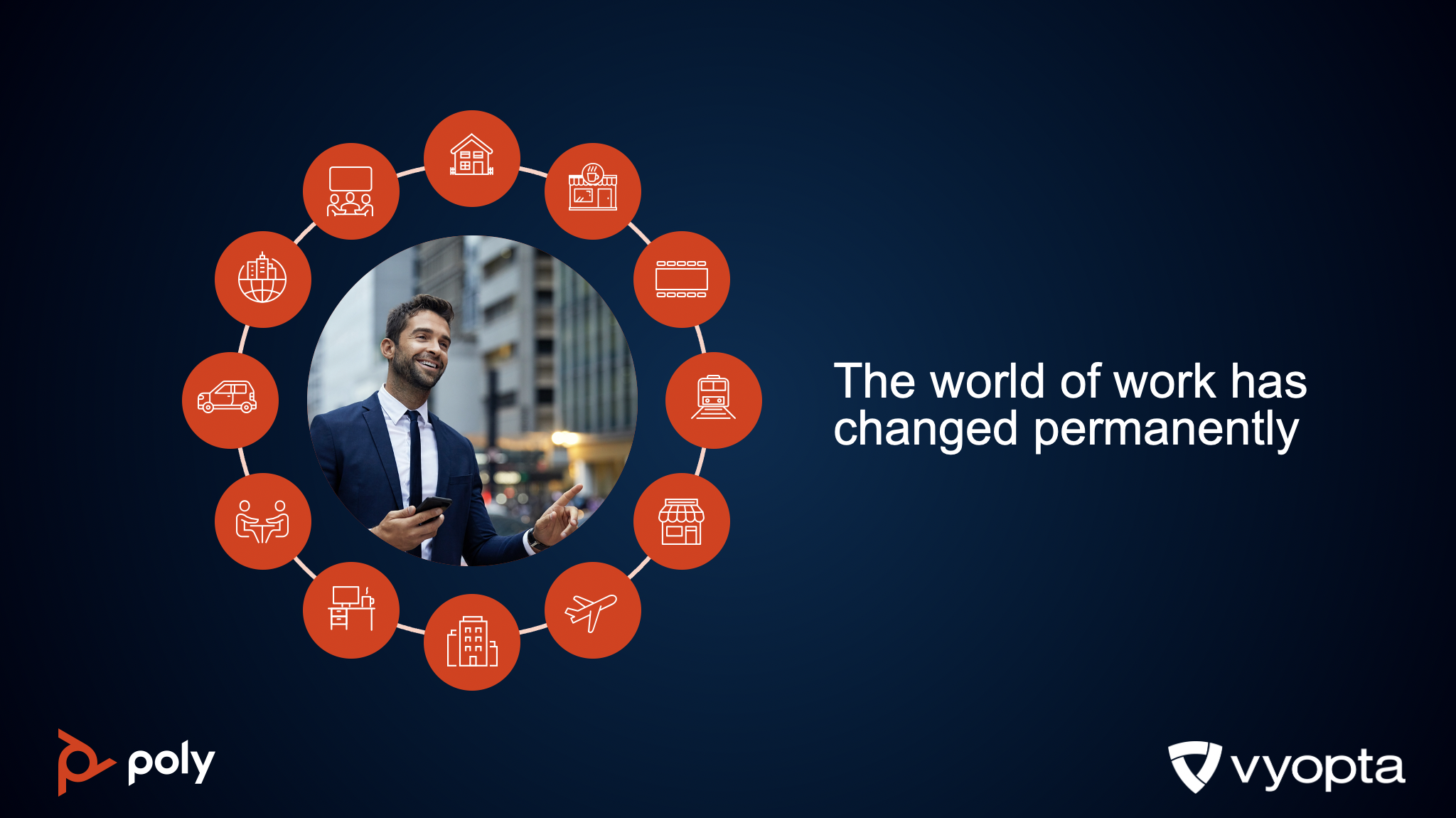.png)
There is transformational potential in play for companies adapting to post-Covid offices, specifically in how they can use collaboration and unified communications tools to revamp and decrease their expensive commercial real estate. To do that correctly will take innovative thinking and lots of data gathered by businesses looking in two different areas: how they want workers to use and experience offices upon returning to work, and measuring as much as possible how and why spaces are being used.
A recent webinar hosted by Vyopta looked at the ways that the real estate world will have to change in the wake of the massive shift to working from home, brought on by the Covid-19 pandemic and an expected long-lasting emphasis on social distancing. The participants – James Waddell, Executive Vice President of Strategic Services for Cognitive Corp, and Nick Wiik, Senior Product Manager for Vyopta – brought years of experience in workplace collaboration and facilities study to the session.
Waddell began by poking holes in the belief that Covid-19 is going to bring about the “death of the office.” While post-Covid offices are likely to be far less busy and packed with employees during the standard work day, he said there will be an ongoing need for co-workers to gather and collaborate in person as well as over remote video and unified communications systems.
“I think this is common knowledge throughout the industry now, people feel there’s a lack of a social connection in in a work from home environment,” Waddell said. “Our offices, post-Industrial Revolution have been places where knowledge workers come to produce the work that they produce and ultimately it’s become process oriented. Post-Covid offices are going to be something entirely different. I think they’re going to be built from an experience perspective. They’re going to help build a sense of community and social interaction.”
Autonomous And Agile Post-Covid Offices
Waddell said there is strong evidence that very soon post-Covid offices will be redesigned to be “self autonomous” and will have tools, software and other infrastructure available everywhere to let occupants conduct their work wherever suits them best. Spaces will be highly responsive to the people that are in them, with equipment and furnishings that can easily be reconfigured. That flexibility will allow for privacy and social distancing when needed and accommodate group brainstorming or presentations made with a hybrid model of both remote and in-person attendees or speakers.
“You’re still going to be in close spaces for close collaboration because we have an innate need for privacy, maybe something you don’t want the general workplace to know about. You need to have an enclosed space for that. We also see here areas of refuge that is going to be absolutely key,” he said.
The likelihood is that companies will be able to do their business with significantly less square footage if they allow remote work policies to continue. To do that, Waddell said it is crucial to study how needs and usage change so that all space can be used appropriately.
This is where he promotes using a twist on the Agile methodology that is most often applied to software development and project management.
Waddell’s Workplace Experience Agile Manifesto includes four components or beliefs:
- Individuals and interactions over processes and tools
- Workplace experience over comprehensive documentation
- Occupant collaboration over policy negotiation
- Responding to change
“We have to know where we’re going and know what our long-term strategy is. We have to know, if we’re divesting, what our divestiture plan is for corporate real estate because we’re in this state of very rapid innovation and very rapid change,” he said. “We have to be very flexible, very agile in making sure that we’re constantly readjusting and adapting for what optimization looks like in our regions for the business units, because all that will change.”
Getting The Deepest Insights
Questions around worker engagement, productivity and performance management will continue to be of the utmost importance going forward as offices will become less of a constant factor in the lives of workers. Wiik said the shift to workers potentially only visiting the office for specific occasions and tasks make information about usage of remote tools as well as physical space utilization – both of which are among Vyopta’s offerings – more important than ever.
This new framework that uses a hybrid approach to collaboration in post-Covid offices puts Vyopta in the perfect place to help with space optimization for both productivity and efficiency of real estate used, he said.
“The reason why people are going back to the office is because it is hard to have the level of collaboration remotely with workers or coworkers, with clients to get the job done. That’s why they’re coming back to the office. Our solution to help with reentry is really looking at how can we bring data to that problem to help people need safer, help people be more effective.”
Wiik pointed to the case of one Vyopta customer who used data for measuring meeting and conference room usage as well as other workspaces to occupy two fewer floors in an office building, saving them $80 million over their five-year lease.
Vyopta’s products aimed at digital and physical spaces such as Collaboration Performance Management (CPM) Monitoring, CPM Analytics, and Workspace Insights give users the look into what resources are being used inefficiently and how to get a better return on investment for real estate.
“What can we do with the data that Vyopta collects to help plan work? It’s ultimately going to tell you how many spaces you need to build or refresh,” he said. “By deploying our singular collection mechanism we can help your IT team, and we’ve been doing that for years already.”

Chad Swiatecki is a business writer and journalist whose work has appeared in Rolling Stone, Billboard, New York Daily News, Austin Business Journal, Austin American-Statesman and many other print and online publications. He lives in Austin, Texas and is a graduate of Michigan State University. Find him online on LinkedIn.



.png)
.png)